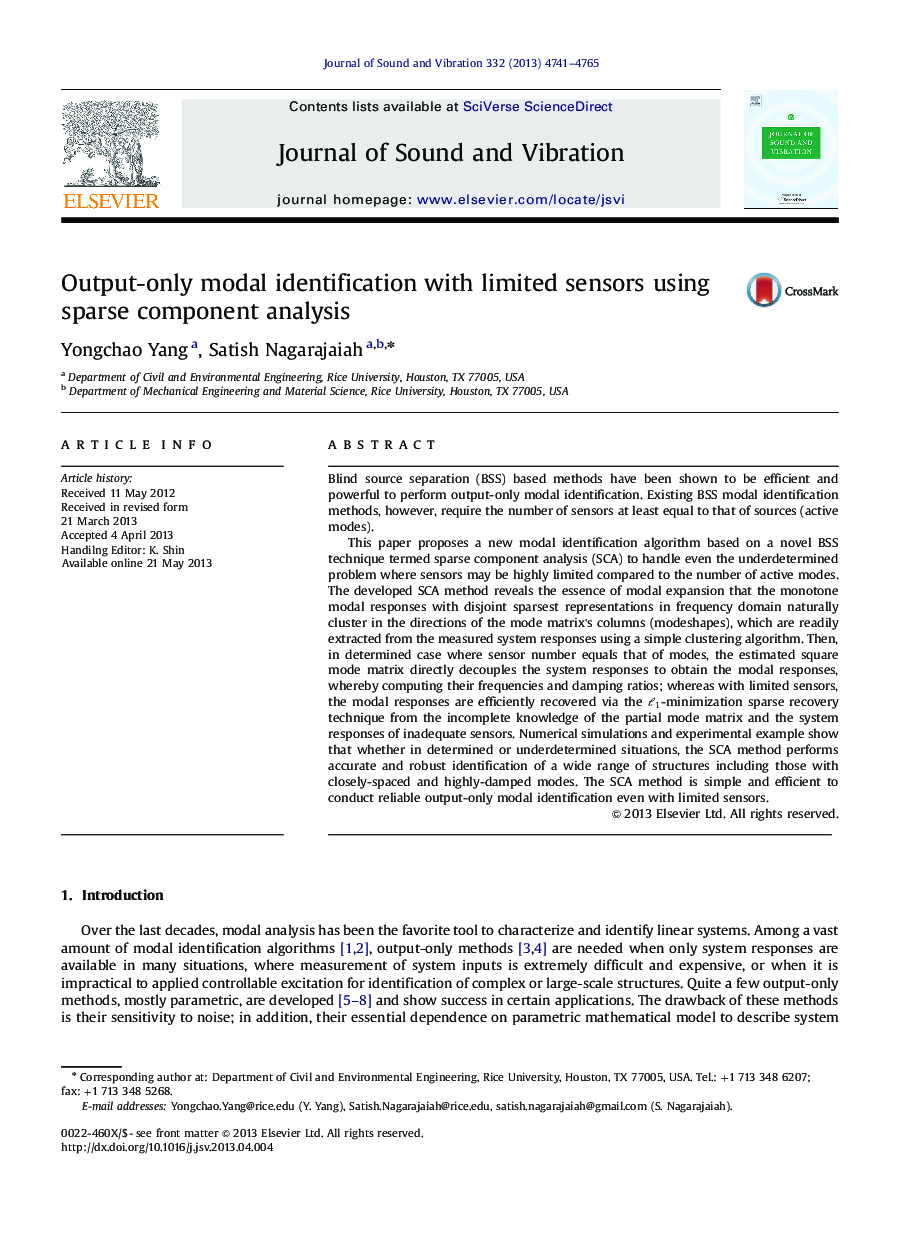| Article ID | Journal | Published Year | Pages | File Type |
|---|---|---|---|---|
| 10289237 | Journal of Sound and Vibration | 2013 | 25 Pages |
Abstract
This paper proposes a new modal identification algorithm based on a novel BSS technique termed sparse component analysis (SCA) to handle even the underdetermined problem where sensors may be highly limited compared to the number of active modes. The developed SCA method reveals the essence of modal expansion that the monotone modal responses with disjoint sparsest representations in frequency domain naturally cluster in the directions of the mode matrix's columns (modeshapes), which are readily extracted from the measured system responses using a simple clustering algorithm. Then, in determined case where sensor number equals that of modes, the estimated square mode matrix directly decouples the system responses to obtain the modal responses, whereby computing their frequencies and damping ratios; whereas with limited sensors, the modal responses are efficiently recovered via the â1-minimization sparse recovery technique from the incomplete knowledge of the partial mode matrix and the system responses of inadequate sensors. Numerical simulations and experimental example show that whether in determined or underdetermined situations, the SCA method performs accurate and robust identification of a wide range of structures including those with closely-spaced and highly-damped modes. The SCA method is simple and efficient to conduct reliable output-only modal identification even with limited sensors.
Related Topics
Physical Sciences and Engineering
Engineering
Civil and Structural Engineering
Authors
Yongchao Yang, Satish Nagarajaiah,
